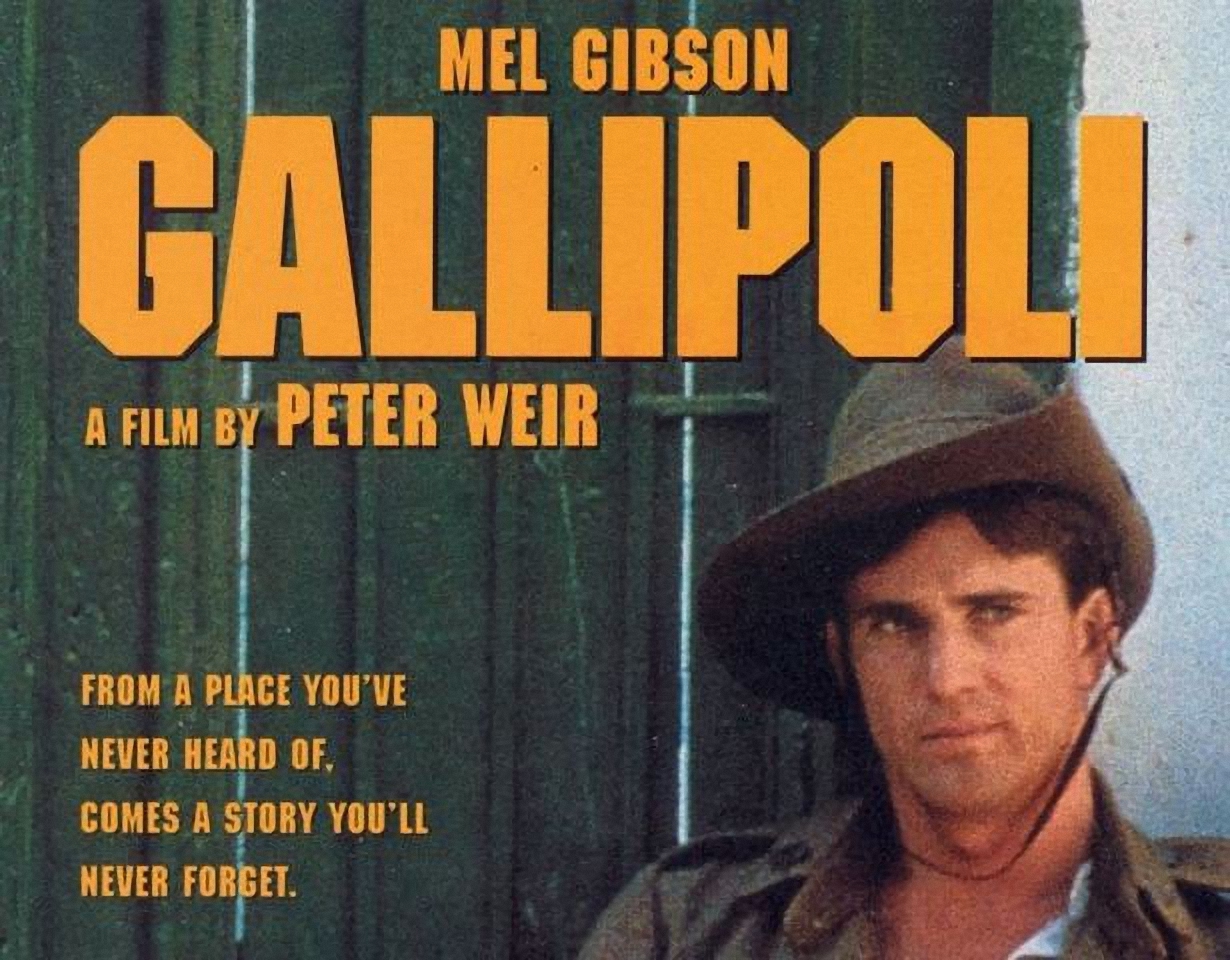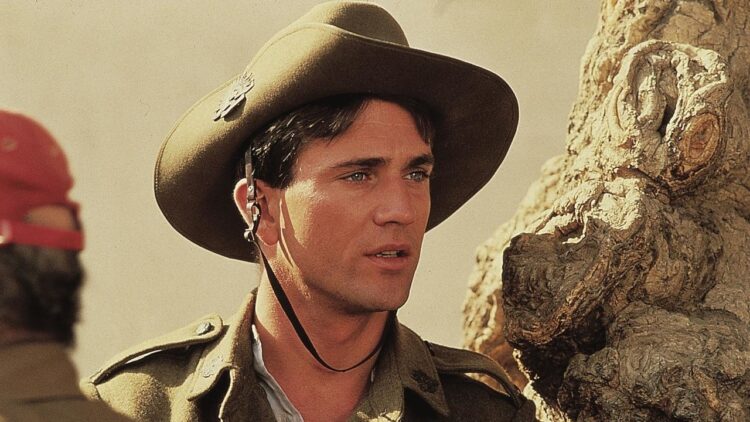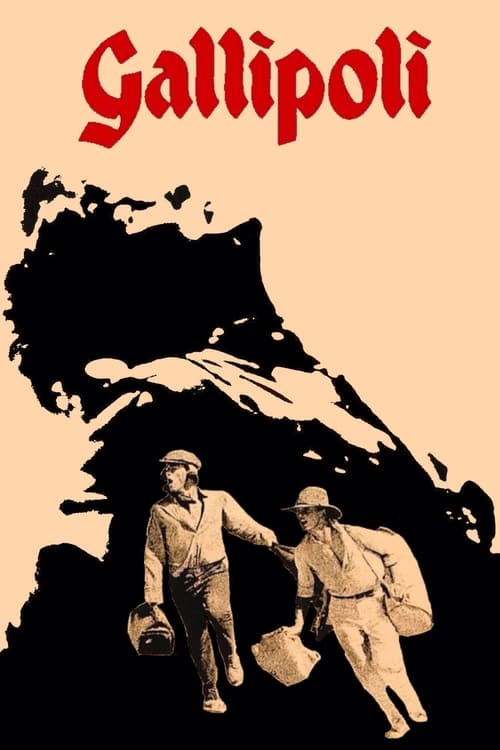Introducing his song “The Band Played Waltzing Matilda”, Australian singer and songwriter Eric Bogle mentioned that while the battle was at its worst, Australia was considering adopting conscription to meet manpower needs. There was a vote, and the plan was rejected. Soldiers were allowed to vote, and, although it would possibly have reduced their own load and risks, the soldiers at Gallipoli rejected the plan by double the margin of the civilian vote. MB: the conscription question came later in the war, not during the Gallipoli campaign.
Although he is wears an AIF uniform, Colonel Robinson is often mistaken for an Englishman because he has a clipped Anglo-Australian accent, typical of the time.
Director Peter Weir was inspired to make the film after visiting a World War I battle site. Originally, he and screenwriter David Williamson planned to encompass the entire Gallipoli campaign from all sides, but instead opted to focus on one small group of characters who would be able to humanize the whole tragedy.
David Williamson adapted his screenplay from Bill Gammage‘s book “The Broken Years”, which is a collection of diary excerpts and letters from around one thousand soldiers, who all fought at Gallipoli.
With a cost of $2.8 million, this was the most expensive Australian film produced at the time.
Due to the popularity of the Gallipoli battlefields as a tourist destination, this film is shown nightly in several hostels and hotels in several towns on the peninsula.
One of the producers was media mogul Rupert Murdoch. His father, Keith, had been a journalist in World War I. He visited Gallipoli briefly in September 1915, and became an influential agitator against how the British top brass had conducted themselves during the battle.
The music Major Barton is playing the night before the attack is the famous duet from The Pearl Fishers by Georges Bizet, in which two men swear to remain friends and be united until death.
Producers advertised for 400 skilled male horse riders for the movie, but only 200 turned up for shooting. The other 200 horse riders in the movie were women dressed to look like men.
It took three years for filmmakers to secure funding. The Australian government’s film agency refused to fund it, saying it was “not commercial”.
At the time of filming, Peter Weirfelt that his young star, Mel Gibson, was “full of beans, and really with no grand career ambitions.”
The book that Jack reads to the children early in the film is Rudyard Kipling’s “The Jungle Book.” The part he reads discusses the main character Mowgli’s passage to manhood, and for the purposes of the film, foreshadows Archie’s passage to manhood, as he leaves for the war.
For a great deal of the cast and crew, ANZAC Day – the day in Australia that commemorates the war dead – meant little more than a vacation from school. Working on the film made them realize its true significance.
The movie was initially to be made by the South Australian Film Corporation, who were the original team behind the production. However, they withdrew support for the film, over creative differences with the script. However, the movie was still partially filmed in South Australia. The Gallipoli Peninsula was filmed at Port Lincoln, while the market sequence was also filmed in South Australia, at a fish market.
The film was given a small release in the U.S where it was pitched to the US audiences as an arthouse film, ,(due to the then novelty of an Australian made feature film being screened there). The film was given a smallish run in UK cinemas too in December 1982 where it got excellent reviews and good word of mouth resulting in a better than expected box office. This film was released on video rental (VHS and Betamax) in the UK in 1983, a full year before its video release in Australia (where it had a lengthy theatrical release including a re-release) as the video rental market wasn’t as large in Australia as it was in the UK.
Shortly after Archie and Frank arrive at Gallipoli, they cross through the trenches to try and take what they think is a shortcut to the beach, when the soldier guarding the point informs them it’s a shortcut to “the bloody cemetery.” The guard is sitting beside a sign that says “Abandon hope past this point.” This is a paraphrasing of “Abandon all hope, ye who enter here,” a famous line from fourteenth century poet Dante Alighieri’s poem “Inferno”, and the inscription above the gate of Hell as the poet walks through it.
Included among the “1001 Movies You Must See Before You Die”, edited by Steven Schneider.
Carries the disclaimer: “Although based on events which took place on the Gallipoli Peninsula in 1915, the characters portrayed in this film are entirely fictitious.”
The film anachronistically uses a snippet from Jean-Michel Jarre’s 1976 synth album ‘Oxygene’ to give the desert an ‘alien’ feel.
Mel Gibson and Robert Grubb also appear together in “Mad Max: Beyond Thunderdome.”
Actors Bill Kerr, Tim McKenzie, and Graham Dow appeared in both ‘Gallipoli’ (1981) and ‘The Lighthorsemen’ (1987) – both epic Australian pictures about World War I which were both partly and significantly filmed in South Australia. Also working on both productions were fxperts Steve Courtley and Roger Cowland, machinist / costume designer David Rowe, and horse wrangler Bill Willoughby.
The war movie ‘The Lighthorsemen’ (1987) set during World War One features a pacifist character who does not kill. In the later Australian feature film, ‘Hacksaw Ridge’ (2016), it featured a central character who was also a pacifist character, with his pacifism in World War Two being the major theme in the picture. ‘Hacksaw Ridge’ (2016) was made and first released almost thirty years after ‘The Lighthorsemen’ (1987) (twenty-nine to be exact) and was directed by Mel Gibson who had starred in the classic Australian feature film about World War One, ‘Gallipoli’ (1981), which was directed by Peter Weir. Both ‘Gallipoli’ (1981) and ‘The Lighthorsemen’ (1987) shared two major filming locations of Port Lincoln and the Flinders Ranges which are both located in South Australia. Both ‘Gallipoli’ (1981) and ‘Hacksaw Ridge’ (2016) won several AFI / AACTA Australian film awards, including Best Film, with ‘The Lighthorsemen’ (1987) winning a couple of AFI awards, the same number as ‘Hacksaw Ridge’ (2016) won Oscars.
*The views and opinions expressed on this website are solely those of the original authors and contributors. These views and opinions do not necessarily represent those of Spotter Up Magazine, the administrative staff, and/or any/all contributors to this site.


